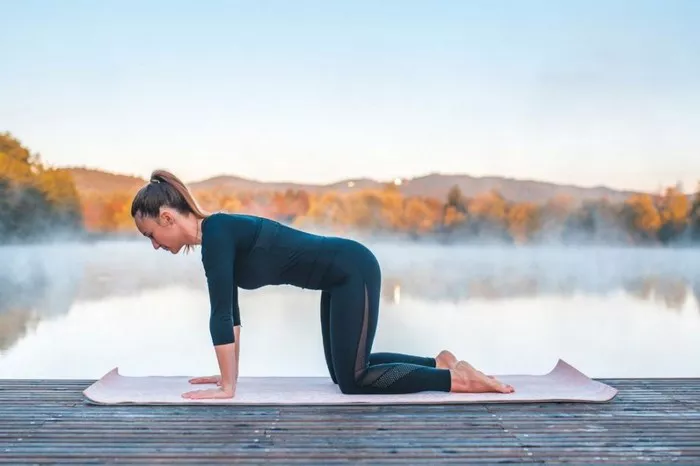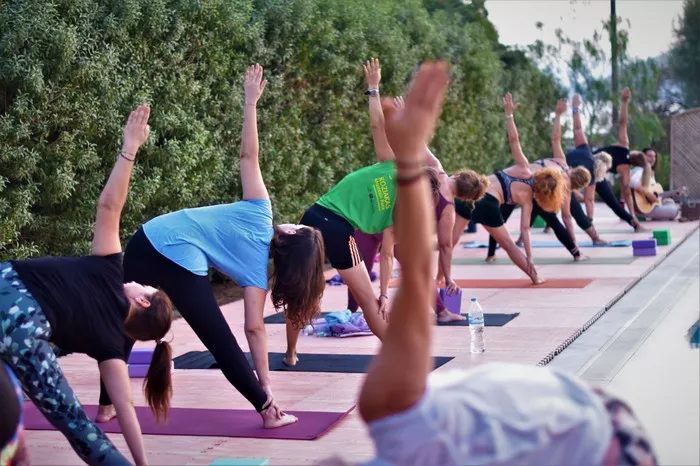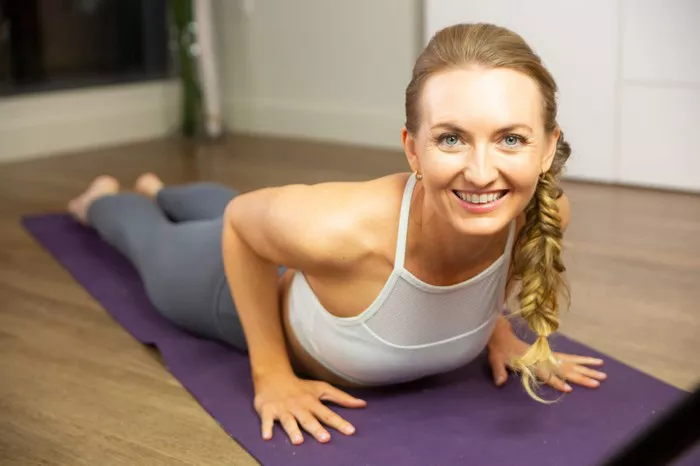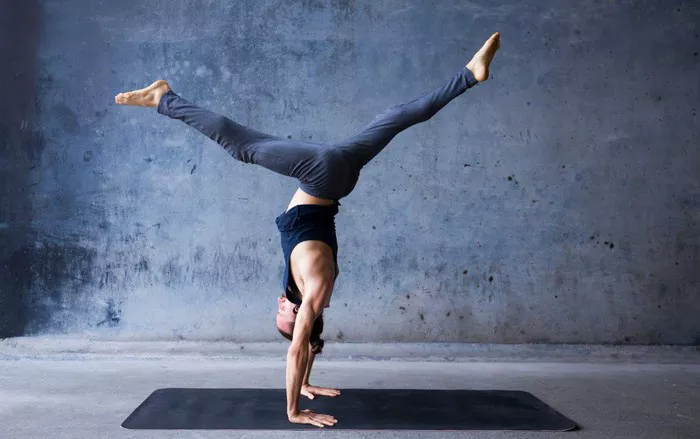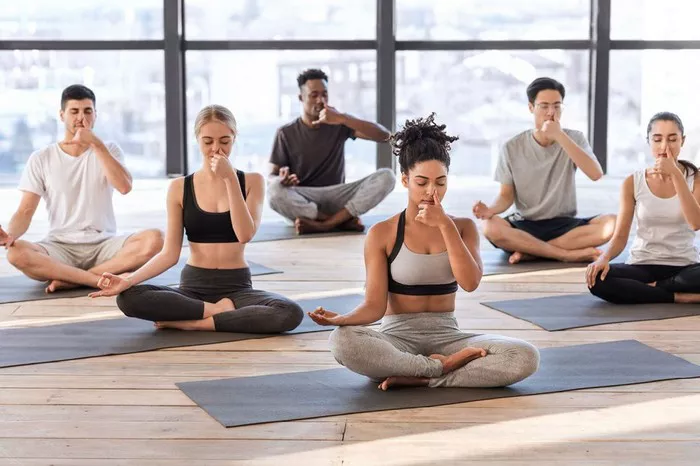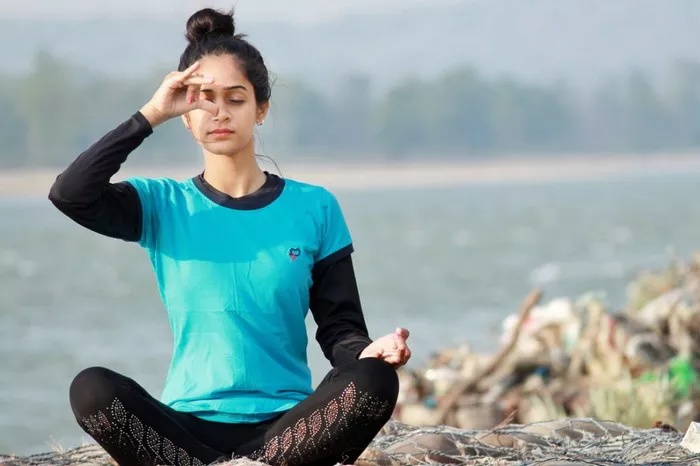Cow Face Pose, known as Gomukhasana in Sanskrit, is a foundational seated yoga pose that deeply stretches the hips, shoulders, and chest. The name “Gomukha” translates to “cow’s face,” which refers to the shape that the pose creates, with the legs representing the face and the arms resembling the ears of a cow. This pose is an excellent posture to improve flexibility, enhance posture, and promote balance in the body.
In this article, we will walk through the steps of coming into the Cow Face Pose, the benefits it offers, the common mistakes practitioners make, and tips to safely and effectively incorporate it into your practice. Whether you are a seasoned yogi or a beginner, this pose can provide profound physical and mental benefits when practiced correctly.
Benefits of Cow Face Pose (Gomukhasana)
Before diving into the steps to enter Cow Face Pose, let’s take a closer look at the benefits of this pose. Understanding how this posture enhances your body and mind will provide more motivation for practice.
1. Stretches the Hips
Gomukhasana stretches the outer hips and the hip flexors. The crisscrossing of the legs works to open up tight hip muscles, and over time, this can lead to improved flexibility in the hip area. This is particularly beneficial for individuals who sit for long hours or have tightness in their lower body.
2. Opens the Shoulders
One of the more challenging aspects of Cow Face Pose is the stretch it provides to the shoulders. Reaching one arm over the shoulder and the other behind the back helps open the chest and shoulders. It also stretches the upper arms and the triceps.
3. Relieves Lower Back Tension
The deep hip opening and spinal alignment in Gomukhasana can relieve tension in the lower back. As you sit tall with your spine aligned, you create space in your lower back, reducing pressure and promoting better posture.
4. Improves Posture
The deep stretch of the back and chest helps improve overall posture. In modern society, many people experience slouching or rounding of the shoulders due to prolonged sitting or desk work. Practicing Gomukhasana encourages the opening of the chest and lengthening of the spine, which helps develop a more aligned and upright posture.
5. Stimulates Internal Organs
With its deep twists and stretches, Cow Face Pose can also massage and stimulate internal organs. The opening of the hips and chest, along with the extension of the arms, encourages circulation and digestion.
6. Promotes Calmness
As with many yoga postures, Gomukhasana can help calm the nervous system and promote mental clarity. The sustained hold in this pose encourages mindfulness, and as you focus on your breath, you enter a state of relaxation.
Step-by-Step Guide: How to Come Into a Cow Face Pose
Now that we understand the benefits, let’s look at how to perform Cow Face Pose step by step. The process may feel challenging at first, especially if you have tight hips or shoulders, but with consistent practice, you will notice improvements.
1. Start in a Seated Position
Begin by sitting on the floor with your legs extended straight in front of you. Make sure your spine is tall and your shoulders are relaxed. If sitting on the floor feels uncomfortable, place a blanket or cushion underneath your hips for added support. This helps elevate your hips and keeps your spine in a neutral position.
2. Positioning the Legs
- Bend your knees and stack your legs. Bring your right knee directly on top of your left knee so that your knees are stacked and your legs form a shape similar to the number “4.”
- Your feet should be close to your hips, and the tops of your feet should press into the floor.
- If your hips are tight and you find it difficult to sit upright or if your knees are far from the floor, you can use a prop such as a cushion or yoga block under your hips to help you maintain proper alignment.
- Alternatively, if stacking your legs this way feels very challenging, you can modify by keeping one leg extended and the other bent, or just sit comfortably with your legs crossed (Sukhasana).
3. Reaching the Arms
- Extend your left arm straight up toward the ceiling, keeping your elbow pointing toward the sky.
- Bend your left elbow, bringing your left hand down behind your head.
- At the same time, extend your right arm straight down, and bend the elbow so that your hand reaches up behind your back.
- Try to bring your right hand and left hand together, or if this feels out of reach, use a yoga strap or towel around your hands to bridge the gap.
4. Engage the Spine
Sit tall, engaging your core muscles. Make sure your spine is elongated and that you are not leaning forward or slouching. Imagine lengthening your spine as you pull the crown of your head towards the ceiling. This helps keep your posture strong and stable as you hold the pose.
5. Breathing and Holding the Pose
Once you are in position, focus on your breath. Inhale deeply, allowing your chest to expand, and exhale slowly to release tension. Stay in the pose for about 5-10 breaths, or longer if it feels comfortable for you.
While holding the pose, continue to lengthen the spine with every inhale and relax the shoulders away from the ears with every exhale. Pay attention to the deep stretch in the shoulders and hips. This may take time to adjust to, so don’t push yourself too hard initially.
6. Releasing the Pose
To release the pose, gently bring your arms back to your sides and straighten your legs. You may want to shake out your legs or stretch them in front of you before repeating the pose on the opposite side.
7. Repeat on the Other Side
After a few breaths, you can switch sides. Stack the opposite leg on top and reverse the arm positions, ensuring that you maintain the same level of engagement and alignment.
Common Mistakes to Avoid
While practicing Cow Face Pose, there are some common mistakes that many practitioners make. Avoiding these errors will help you come into the pose more safely and effectively:
1. Hunched Shoulders
If your shoulders are hunched toward your ears, it can create unnecessary tension and discomfort. Focus on pulling your shoulder blades down your back and away from your ears to prevent straining the neck and shoulders.
2. Forcing the Arms to Bind
One of the most common challenges in this pose is bringing the hands together behind the back. If you cannot reach your hands together, do not force it. Use a yoga strap or towel to connect the hands or simply hold onto your upper arm to feel the stretch without compromising your form.
3. Misalignment of the Spine
Be mindful of your spine’s alignment. Do not allow your lower back to collapse or round. Sit up tall and imagine creating space between your vertebrae. Keeping your spine straight allows you to get the most benefit from the stretch and avoid discomfort.
4. Overstretching the Hips
If you feel sharp pain or discomfort in your hips, it may mean that you are overstretching. Make sure your knees are aligned and are not forcing themselves toward the floor. A slight lift of the hips with props can help ease any discomfort.
Modifications and Variations
If you have tight hips, shoulders, or wrists, or if you are working with an injury, there are several modifications you can use to make Cow Face Pose more accessible:
1. Use Props
- Place a block or cushion under your hips to elevate them and support the pelvis.
- Use a yoga strap around the wrists to help bridge the gap between the hands if you cannot reach them.
- A rolled-up towel or bolster can provide extra support if your lower back feels strained.
2. Modify the Leg Position
If stacking the knees is too intense, try extending one leg out in front of you while keeping the other bent, or sit with your legs in a simple cross-legged position.
3. Practice on a Chair
If sitting on the floor is not comfortable, you can practice Gomukhasana in a chair by following the same steps, adjusting the arm movements, and keeping the legs in a seated cross-legged position.
Conclusion
Cow Face Pose (Gomukhasana) is a versatile and highly beneficial yoga pose that can improve your flexibility, posture, and overall well-being. With consistent practice and proper alignment, you can experience the full benefits of this pose, including the release of tension in the hips and shoulders, improved posture, and a calm, balanced mind. Keep in mind that it’s important to approach this pose with patience, as it may take time to open up the hips and shoulders. By using props and modifications, you can make the pose more accessible and ensure a safe practice.
Whether you are new to yoga or an experienced practitioner, incorporating Cow Face Pose into your routine will deepen your practice and contribute to long-term health and well-being.
Related Topics:





